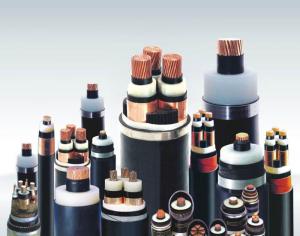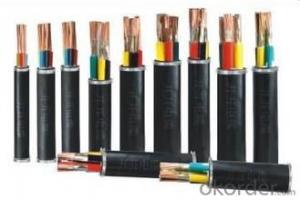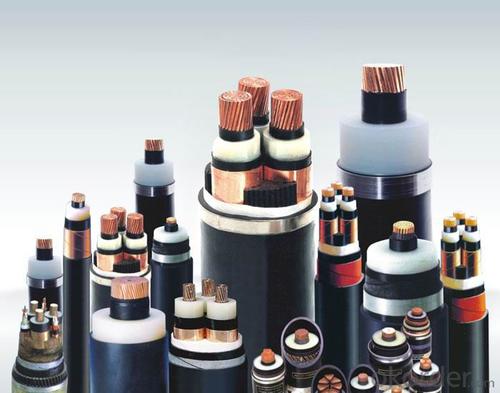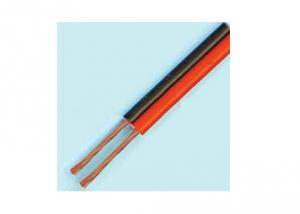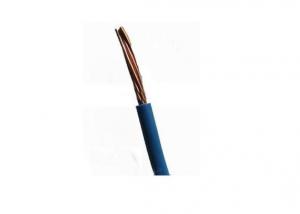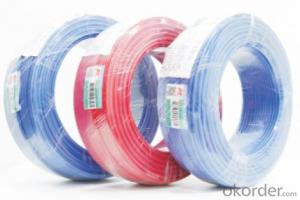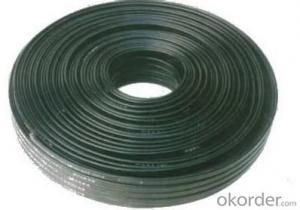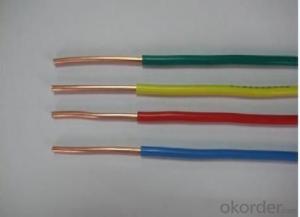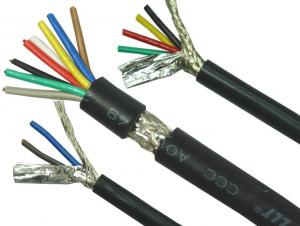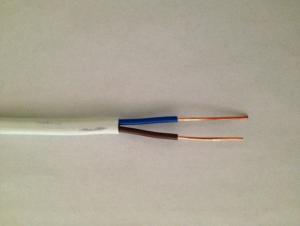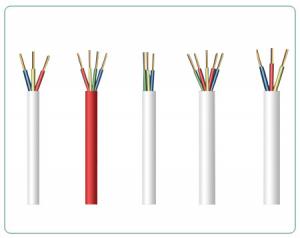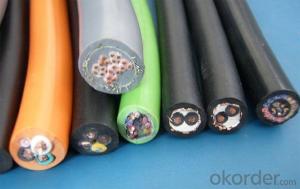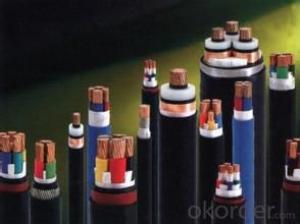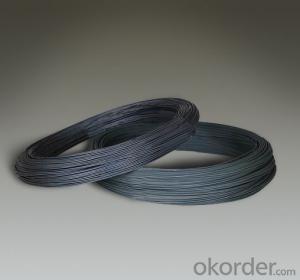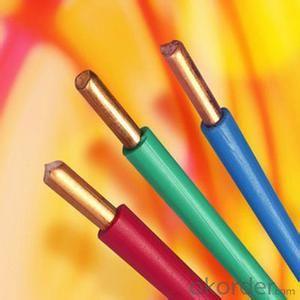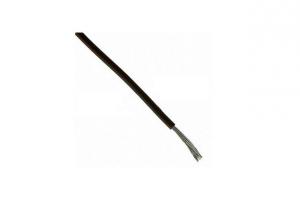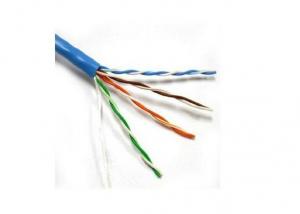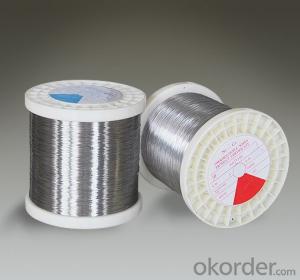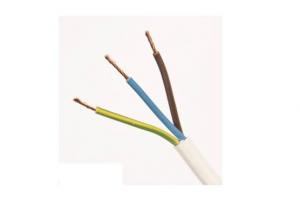Low Voltage Power Cable 240 185 150 120 mm2 PVC XLPE Cable
- Loading Port:
- China main port
- Payment Terms:
- TT or LC
- Min Order Qty:
- 100 m
- Supply Capability:
- 20000 m/month
OKorder Service Pledge
OKorder Financial Service
You Might Also Like
Low Voltage Power Cable 240 185 150 120 mm2 PVC XLPE Cable
Brief Introduction
1.XLPE armored power cable is made complying with the national standed and have pass the CCC - China Compulsory Certification, which contains the recondition of national security certificateC - CEE,imports of safety and quality licensing system - CCIB, China Certification Electromagnetic Compatibility - EMC
2.Range of application : this product is fit A.C rated voltage 0.6/1KV
3 The temperature of the conductor in the working time is no more than 90 centigrade
4.The XLPE cable is mainly used for current transmission,laying in the building, tunnel or directly in the earth, it can afford the outside pressure
5. We can also customize the electrical wire and cable as your requestyou can decide the core count and cross seaction of the conductor, as well as the jacket and insulation
6.The specification YJV
The PVC insulated power cable and fire resistant cable are suitable for fixed laying in power transmission and distribution lines with A. C. 50Hz and voltage rating of up to or including 6KV.
Product Description:
1. Conductors: Copper or aluminum.
2. Both armored and non-armored type power cables are available.
3. Voltage rating: 0.6/1kV 3.6/6kV.
4. PVC or PE sheathed.
5. Number of cable cores: One core (Single core), two cores(Double cores), three cores,
Four cores (Four Equal-section-area cores or three equal-section-area cores and one smaller section area neutral core),
Five cores (Five equal-area cores or three equal-section-area cores and two smaller section area neutral cores).
6. Standards: Chinese national standard GB 12706 and GB 12666.6(equivalent to IEC 60502 and IEC 60331)
IEC, BS, DIN, ASTM, CSA, NFC, AS, GOST etc. Or other special characteristics as customers request.
Application conditions
1. The long-time permissible operation temperature of conductor shall not be higher than 70oC.
2. Conductor maximum short circuit (not more than 5 seconds) temperature shall not be higher than 160 oC.
3. The power cable is not limited by drop in level when being laid, and the ambient temperature shall not be lower than 0 oC.
If so, the cable should to be preheated.
4. Perfect chemical stability, resistant against acids, alkalis, grease and organic solvents, and flame.
5. Light weight, perfect bending properties, installed and maintained easily and conveniently.
Specification
Cu Core | AL Core | Description | Application |
VV | VLV | Cu(Al)Core PVC Insulated PVC Sheathed Power Cable | For laying indoors, in ducts and tunnels, but unable to bear pulling force and pressure |
VY | VLY | Cu(Al)Core PVC Insulated PE Sheathed Power Cable | |
VV22 | VLV22 | Cu(Al)Core PVC Insulated Steel Tape Armored PVC Sheathed Power Cable | For laying indoors, in tunnels and directly in ground, able to bear pulling force and pressure |
VV23 | VLV23 | Cu(Al)Core PVC Insulated Steel Tape Armored PE Sheathed Power Cable | |
VV32 | VLV32 | Cu(Al)Core PVC Insulated Fire Steel Wire Armored PVC Sheathed Power Cable | For laying indoors, in wells and underwater, able to bear certain pulling force |
VV33 | VLV33 | Cu(Al)Core PVC Insulated Fire Steel Wire Armored PE Sheathed Power Cable | |
VV42 | VLV42 | Cu(Al)Core PVC Insulated Thick Steel Wire Armored PVC Sheathed Power Cable | For laying in wells and underwater, able to bear certain axial pressure |
VV43 | VLV43 | Cu(Al)Core PVC Insulated Thick Steel Wire Armored PE Sheathed Power Cable | |
NH-VV | NH-VLV | Cu(Al)Core PVC Insulated PVC Sheathed Fire Resistant Cable | For laying indoors, in ducts and tunnels, but unable to bear pulling force and pressure |
NH-VY | NH-VLY | Cu(Al)Core PVC Insulated PE Sheathed Fire Resistant Cable | |
NH-VV22 | NH-VLV22 | Cu(Al)Core PVC Insulated Steel Tape Armored PVC Sheathed Fire Resistant Cable | For laying indoors, in tunnels and directly in ground, able to bear pulling force and pressure |
NH-VV23 | NH-VLV23 | Cu(Al)Core PVC Insulated Steel Tape Armored PE Sheathed Fire Resistant Cable | |
NH-VV32 | NH-VLV32 | Cu(Al)Core PVC Insulated Fire Steel Wire Armored PVC Sheathed Fire Resistant Cable | For laying indoors, in wells and underwater, able to bear certain pulling force |
NH-VV33 | NH-VLV33 | Cu(Al)Core PVC Insulated Fire Steel Wire Armored PE Sheathed Fire Resistant Cable | |
NH-VV42 | NH-VLV42 | Cu(Al)Core PVC Insulated Thick Steel Wire Armored PVC Sheathed Fire Resistant Cable | For laying in wells and underwater, able to bear certain axial pressure |
NH- VV43 | NH-VLV43 | Cu(Al)Core PVC Insulated Thick Steel Wire Armored PE Sheathed Fire Resistant Cable |
Datas Prameters
1 core
|
1*10; 1*16; 1*25; 1*35; 1*50; 1*70; 1*95; 1*120; 1*150; 1*185; 1*240; 1*300; 1*400
|
2 core
|
2*1.5; 2*2.5; 2*4; 2*6; 2*10; 2*16; 2*25; 2*35; 2*50; 2*70; 2*95; 2*120; 2*150; 2*185; 2*240; 2*300
|
3core
|
3*1.5; 3*2.5; 3*4; 3*6; 3*10; 3*16; 3*25; 3*35; 3*50; 3*70; 3*95; 3*120; 3*150; 3*185; 3*240; 3*300
|
4 core
|
4*4; 4*6; 4*10; 4*16; 4*25; 4*35; 4*50; 4*70; 4*95; 4*120; 4*150; 4*185; 4*240 |
5 core
|
5*1.5; 5*2.5; 5*4; 5*6; 5*10; 5*16; 5*25; 5*35; 5*50; 5*70; 5*95; 5*120; 5*150; 5*185; 5*240; |
3+1 core | 3*4+1*2.5; 3*6+1*4; 3*10+1*6; 3*16+1*10; 3*25+1*16; 3*35+1*16; 3*50+1*25; 3*70+1*35. |
4+1 core | 4*2.5+1*1.5; 4*4+1*2.5; 4*6+1*4; 3*10+1*6; 4*16+1*10; 4*25+1*16; 4*35+1*16; 4*50+1*25; 4*70+1*35; 4*95+1*50; 4*120+1*70; 4*150+1*70; 4*185+1*95; 4*240+1*120; 4*300+1*150. |
- Q: Ihave a 19 gallon, electric, 120v water heater. Can I splice the two wires in it to an electrical cord that I can plug into a normal wall outlet? If so, can you tell me how, or direct me to a website which explains the process?
- Yes.But make sure the cord is heavy enough to carry the amperage that is required for the water heater.There's a plaque with the volts and amps on there some where. One amp equals 100 watts. Make sure and use a 3 prong plug and be sure and attach the ground to the frame of the heater. The other 2 wires should be color coded but it doesn't matter which way you attach those.Also, make sure the outlet you use has a large enough breaker to handle the load.
- Q: i just want to ask a question.if you have to wire a house whether single phase or three phase wiring , then, would you choose a heavier wire for hot wire (live wire) or would you choose a heavier wire for the neutral ?3 - 29 or 7 - 44 . what size would you choose for neutral what for hot wire (live wire) ?thanks
- Household wiring comes with the hot, neutral and ground wire all in the same bundle, so no choice like this is required. The hot and neutral would all carry the same current however, so if I had to choose, they would be the same size.
- Q: And should you use electrical tape at the base of your wire nuts?
- I don't know about marking large guage wires unless you are referring to colored electrical tape. There are many uses for electrical tape as a insulating factor. And yes, taping the wire nuts is a good deterrent to moisture getting to the wire connection
- Q: Electrical wire, optical wire, air, and space.Help!
- Information can be transmitted via several methods: Electromagnetic Pulses. Electrical Waves. Radio Waves. Sound Waves. Light Waves. Now you figure out which goes with each one.
- Q: help! i have been searching but counldn't find the inventor HELP!
- Wire was around before Edison, he invented the phonograph. He couldn't have done it without wires. Ben Franklin invented the lightning rod, I guess you could consider that the first use of an electrical distribution method.
- Q: i have a big box of many different kinds of wires (av, usb, power supplies, etc), but i don't know what most of them are and what they are used for. is there a website where i can find out what all of these wires are used for?
- You mean cables, not wires. A cable can contain many wires.
- Q: I need to splice some 4 gauge electrical wire together to get a couple more feet, Are there wire nut big enough? or can I just tape it really good? What do i do?
- you will need a split bolt (copper) and mastic pads. if indoor put both wires in a UL approved box 4-4 inches. MAKE SURE THE POWER IS OFF ! put both ends together in the split bolt and tighten. take a 6-6 mastic pad and wrap the split bolt / wires. then wrap electrical tape around the mastic area. this makes a real good connection and water proof.
- Q: I would like a electrical wiring diagram for a ceiling fan with a built in light to replace my existing ceiling light. thank you.
- Connect the black from the light to all the blacks in the ceiling. connect the white from the light to all the whites in the ceiling. Connect the black wire and the white wire to a standard switch at the wall. that should work. But I strongly suggest getting a volt meter before going much further because not every electrician does thing the same way especially if your house has age to it. Volt meters are far cheaper than hospital bills and house fires.
- Q: I have two lights that are wired into one light switch. I would like advice on what would be the easiest way to separate them and put the second light onto it's own switch.
- This maybe quick and easy. After you turn off the power, remove the switch and: Look at the wires on the switch and see if the following situation exist. One wire all by itself. One wire that splices to 2 other wires (a total of 3 under a wire nut) If so, the 2 wires that are spliced together MAY be individual switch legs to each light. One way to find out is to use a meter (with the power on and the switch off) and test it. No meter? Remove one wire from the splice (put the wire nut back on) and restore power. If one light works and one doesn't, you are in luck. If neither light works, stop put it all back together. You can't do it from here. But if the single wire was the hot: Get a stack switch a.k.a. combination switch. Look carefully at the sides of the new switch. On one side there is a small piece of metal between the 2 screws. That is the hot connection. Take the single wire off the old switch and put it there. On the other side the 2 screws are totally separate from each other. This is where the other 2 wires will go. One on each screw of course. Hope you got lucky.
- Q: i need to run an eletrical wire from one building to another. both have breaker boxes the first is a 200 amp which will feed a 100amp
- Your problem is not a National Code issue, it is local. (I won't go into the whole union/Democrat construction control thing for Chicagoland) Running on the ceiling is an option of you have room for the conduit radius between the structural ceiling and a lower framed ceiling. I believe EMT is acceptable vs. RMC. You're likely going to have to cut 3' pieces and use a lot of couplings, there are some trade methods that could eliminate a few couplings, but if you are not familiar with these ways it will take more time to learn that to just cut it. Not really any simple way, you can leave some studs out during framing, drill holes for straight pipe in studs adjacent to where the pipe needs to be, then slide the pipe into the studs after install. But I am an electrician, and I would be cutting a bunch of pieces trying to use the joist space and dropping vertical whenever I could. One unfortunate effect of this law is spaces get wired to the minimum requirement, and this encourages the overuse of extension cords.
Send your message to us
Low Voltage Power Cable 240 185 150 120 mm2 PVC XLPE Cable
- Loading Port:
- China main port
- Payment Terms:
- TT or LC
- Min Order Qty:
- 100 m
- Supply Capability:
- 20000 m/month
OKorder Service Pledge
OKorder Financial Service
Similar products
Hot products
Hot Searches
